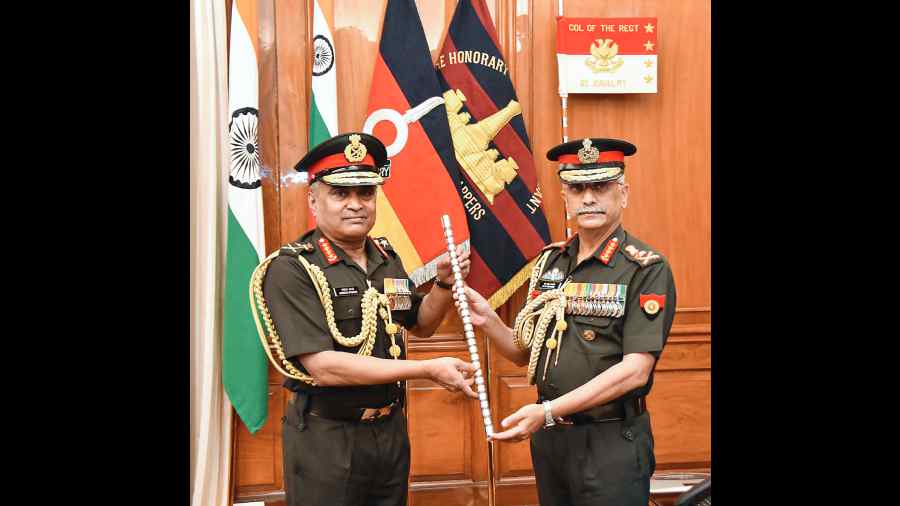India’s new army chief, General Manoj Pande, on Sunday said the army would not allow any change in status quo or loss of territory in eastern Ladakh where Chinese troops are estimated to have taken over nearly 1,000sqkm of India-claimed land.
“We are very clear that we will not permit any change in the status quo or any loss of territory. Over the last two years we have carried out continuous threat assessments and likewise realigned and reoriented our forces,” Pande, who took charge on Saturday, was quoted as saying by news agency ANI.
Pandey said the situation along the Line of Actual Control (LAC) was normal and that Indian troops held important physical positions, ensuring there was no change in status quo.
“The unilateral and provocative actions by our adversary with an aim to alter the status quo by force, I feel, have been adequately responded to,” he said.
The two armies have been locked in a standoff along the LAC at several friction points in eastern Ladakh following Chinese transgressions since April-May 2020.
The Chinese have pulled back partially from the Pangong Lake, Galwan Valley and Gogra, with India retreating by equal distances and triggering accusations from the Opposition and veterans of ceding further territory to the Chinese.
China has refused to budge from the remaining two friction points, Hot Springs and the strategically important Depsang Plains where its army is said to be entrenched 18km inside India-claimed lines.
So far the two countries have held 15 rounds of military talks but the Chinese are said to be refusing to restore the pre-April 2020 status and pressing India to accept the altered frontier.
Talks are “the way forward”, Pandey said. “We are confident that if we continue to talk to the other side, we will find a resolution to the ongoing issues.”
On the Indian army’s preparedness, he said: “In terms of our preparedness levels we have inducted additional equipment and troops in those areas as well as infrastructure. Our focus has also been on infrastructure development, specifically habitat, to match the operational and logistical requirements.
“In the end, our aim is to continuously work towards reducing tensions along the LAC and ensure that restoration of the status quo takes place at the earliest.
“My utmost and foremost priority would be to ensure a very high standard of operational preparedness to face the current as well as contemporary and future challenges across the entire spectrum of conflict.
“Secondly, in terms of capability development and force modernisation, my effort would be to leverage new technologies through the process of indigenisation and atmanirbharata (self-reliance).”
A recent ground assessment by India’s security establishment suggests the Chinese have consolidated their military positions along the LAC in Ladakh.
Four days after the June 15, 2020, clash at the Galwan Valley that killed 20 Indian and four Chinese soldiers, Prime Minister Narendra Modi had said no one had occupied or was occupying Indian territory.
This allowed Beijing to dismiss the allegations of border transgressions and claim ownership of all the territory it held.











